Mozambique: Mondlane celebrates new party as police fire shots outside airport
Mozambique Elections: HRW calls for investigation into ‘excessive use of force’ by police

File photo: HRW
Human Rights Watch (HRW) today called for an impartial investigation into allegations of excessive use of force. by the Mozambican police against demonstrators protesting against the October 9 election results, citing 11 deaths as a result of the clashes.
The authorities should promptly and impartially investigate the apparently excessive use of force,”, said the international organisation in a note distributed to the media today.
At issue are the clashes last week between the Mozambican police and supporters of presidential candidate Venâncio Mondlane, who rejects the results presented by the National Electoral Commission (CNE) regarding the October 9 vote in Mozambique.
Mondlane initially called for a “general strike”, but after the murder of Elvino Dias, his lawyer, and Paulo Guambe, the leader of the Podemos party that supports him, he called his supporters onto the streets to protest “peacefully”, which led to clashes between protesters and the police in several parts of the country, with people injured and arrested, and commerce suspended.
According to HRW, at least 11 people died and dozens more were injured during police operations in residential areas. “Over 50 people suffered serious gunshot wounds, and many, including children as young as one year old, inhaled tear gas that the police fired indiscriminately in residential areas,” reads the HRW statement, which also recalls that the Mozambican Constitution protects the rights to freedom of assembly and expression.
On Monday, the Police of the Republic of Mozambique (PRM) announced that it had opened a criminal case against presidential candidate Venâncio Mondlane and his supporters.
“The PRM has already opened a criminal case against citizen Venâncio Mondlane and his supporters for the crimes of burning down the [Chalaua] police station and seizing an AK-47 firearm, acts that have caused unrest not only in the district of Moma but also in the province of Nampula itself,” corporation spokesperson Orlando Mudumane stated.
The CNE on Thursday announced the victory of Daniel Chapo, supported by the Mozambique Liberation Front (Frelimo, the party in power since 1975) in the election for President of the Republic on October 9, with 70.67% of the votes.
Venâncio Mondlane, supported by the Optimist Party for the Development of Mozambique (Podemos, an extra-parliamentary party), came in second place, with 20.32%, but claims not to recognise these results, which still have to be validated and proclaimed by the Constitutional Council.
Frelimo also strengthened its parliamentary majority, increasing it from 184 to 195 deputies (out of 250), and elected all 10 provincial governors in the country.
In addition to Mondlane, the president of the Mozambican National Resistance (Renamo, the current largest opposition party), Ossufo Momade, one of the four presidential candidates, said he does not recognise the election results announced by the CNE and called for the vote to be annulled.
On Thursday, presidential candidate Lutero Simango, supported by the Democratic Movement of Mozambique (MDM), also rejected the results, considering them to have been “forged in the secretariat”, and promised “political and legal action” to restore the “popular will”.
The Centre for Public Integrity (CIP), a Mozambican non-governmental organization that monitors electoral processes, estimates that ten people died, dozens were injured and around 500 people were arrested in the protests and clashes on Thursday and Friday.
You may read the full HRW statement below.
Mozambique security forces killed at least 11 people and injured dozens of others using live bullets and tear gas during post-election protests across the country on October 24 and 25, 2024, Human Rights Watch said today. The authorities should promptly and impartially investigate the apparently excessive use of force.
On October 24, the Mozambican election commission announced that Daniel Chapo and the ruling party Frente de Libertação de Moçambique (Front for the Liberation of Mozambique, FRELIMO) had won the October 9 general elections. The elections and pre-elections period were marred by political killings, widespread irregularities, and restrictions on the rights to freedom of expression and assembly.
“The Mozambique security forces’ violent crackdown on protesters has severely increased political tensions following the country’s elections,” said Allan Ngari, Africa advocacy director at Human Rights Watch. “Mozambican authorities should promptly and impartially investigate alleged misuse of force and hold those responsible accountable.”
Human Rights Watch interviewed 22 people in person and by telephone between October 24 and 27, including victims and witnesses to the violence, physicians, journalists, government officials, and officials of local civil society groups.
Over 50 people suffered serious gunshot wounds, and many, including children as young as one year old, inhaled tear gas that the police fired indiscriminately into residential areas. Police have detained over 400 people who allegedly engaged in public disorder, looting of shops, destruction of public and private property, and an attack on a police station.
Tensions escalated on October 10 when Venâncio Mondlane, an independent candidate supported by the leading opposition party, Partido Optimista pelo Desenvolvimento de Moçambique, (Optimistic People for the Development of Mozambique, PODEMOS), claimed victory.
On October 24, thousands of opposition supporters peacefully marched in Maputo to protest the elections results. Across the country, some protesters burned tires and blocked roads. Riot police deployed with dogs and armoured vehicles fired live ammunition, rubber bullets, and tear gas to disperse the crowds. Some protesters also threw rocks and other objects at the police. At least eight police officers were reportedly injured.
In the cities of Chimoio and Gondola in Manica province, police shot and killed at least three people according to two local rights groups, the Centre for Democracy and Development (CDD) and the Civil Society Platform for Electoral Monitoring (DECIDE).
A doctor at the Chimoio Provincial Hospital confirmed the deaths, noting that one of the victims had “a bullet in his spine,” while the other two “were hit in the abdominal area.” He said that the hospital had admitted dozens of other people with bullet wounds on October 24.
A 37-year-old man said that at about 4:00 p.m. on October 24 he received a call from a hospital in Chimoio, to come and identify the body of his younger brother, who had joined the initially peaceful protests around 10:00 a.m. He said that his brother “had two bullets in his genital area.”
In northern Nampula city, three witnesses said police killed at least one person, and injured several others when they shot live and rubber bullets into a crowd of protesters who threw stones at them.
A woman said that at around 3:00 p.m. her 12-year-old granddaughter was watching the protest from inside the family compound in Nampula city, when a bullet from the police hit the girl’s right hip. “As the crowd fled down the street from live police bullets, we saw the girl collapse on the floor,” her grandmother said. “We thought she was hiding in fear, but no, she had been hit by a bullet.” The girl was treated for her injuries at Nampula Central Hospital.
Three of at least eight other people admitted to the Nampula Central Hospital on October 24 with gunshot wounds died from their injuries, a doctor told Human Rights Watch. At least six others also died from police gunshots in Nampula province, according to CDD and DECIDE.
A police spokesman in Nampula told Human Rights Watch that one person had died from bullet injuries. He declined to explain why the police used live ammunition.
In Maputo, police fired tear gas to disperse protesters who burned tires on a main road, the media reported. A witness said that police indiscriminately fired tear gas into houses as the protesters fled into a residential area. Several people reportedly inhaled the gas inside their homes, including a mother and her two toddlers.
Another woman said two tear gas canisters landed inside her home through an open window at around 6 p.m. “The smoke was too much, and the smell was terrible,” she said. “I had children at home but thank God we all came out safe.”
Mozambique’s constitution protects the rights to freedom of assembly and expression, and prohibits the excessive use of force by law enforcement officials, as guaranteed under international law.
The United Nations Basic Principles on the Use of Force and Firearms by Law Enforcement Officials and the African Commission on Human and Peoples’ Rights Guidelines for the Policing of Assemblies by Law Enforcement Officials in Africa severely restrict the use of force, especially the use of lethal weapons, and so-called less-lethal weapons, such as tear gas.
International standards provide that security forces should use the minimum necessary force at all times. Nonviolent means should be used before resorting to the use of force and firearms. Law enforcement officers may only intentionally make lethal use of firearms when strictly unavoidable to protect life. The United Nations Human Rights Committee in a General comment stated that “[f]irearms are not an appropriate tool for the policing of assemblies. They must never be used simply to disperse an assembly.… [A]ny use of firearms by law enforcement officials in the context of assemblies must be limited to targeted individuals in circumstances in which it is strictly necessary to confront an imminent threat of death or serious injury.”


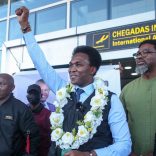
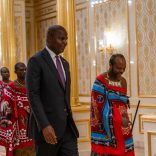
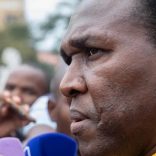
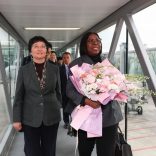




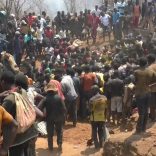


Leave a Reply
Be the First to Comment!
You must be logged in to post a comment.
You must be logged in to post a comment.